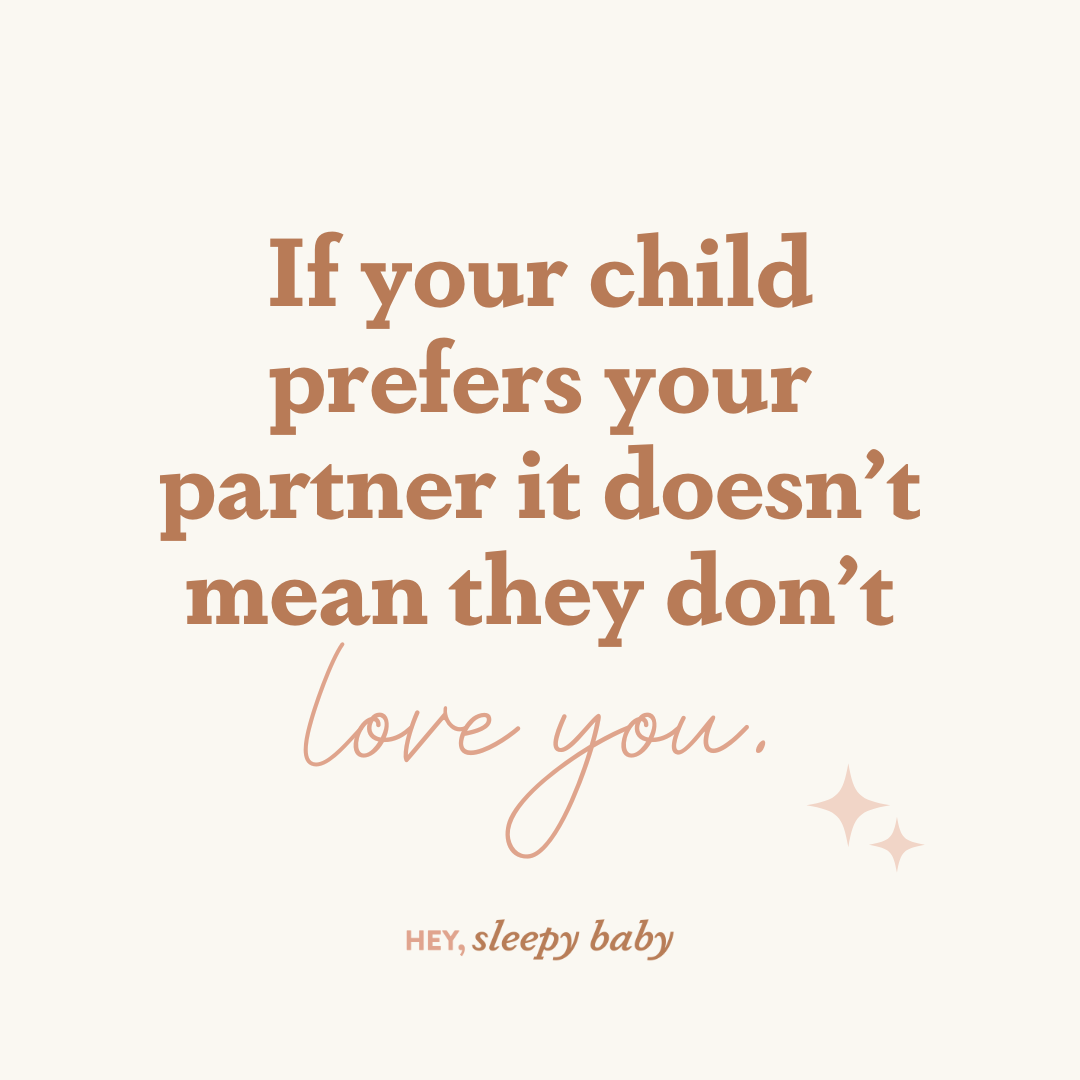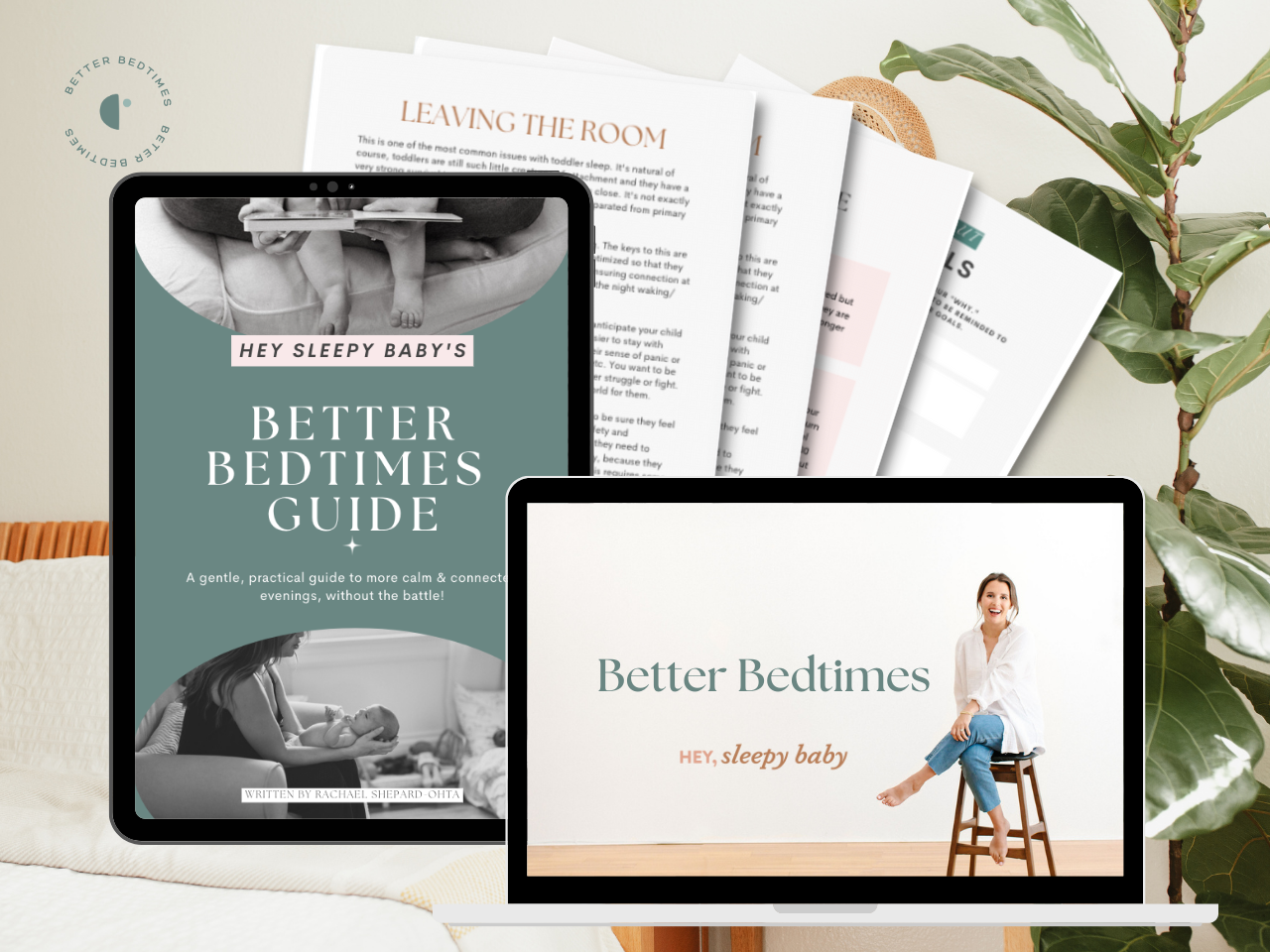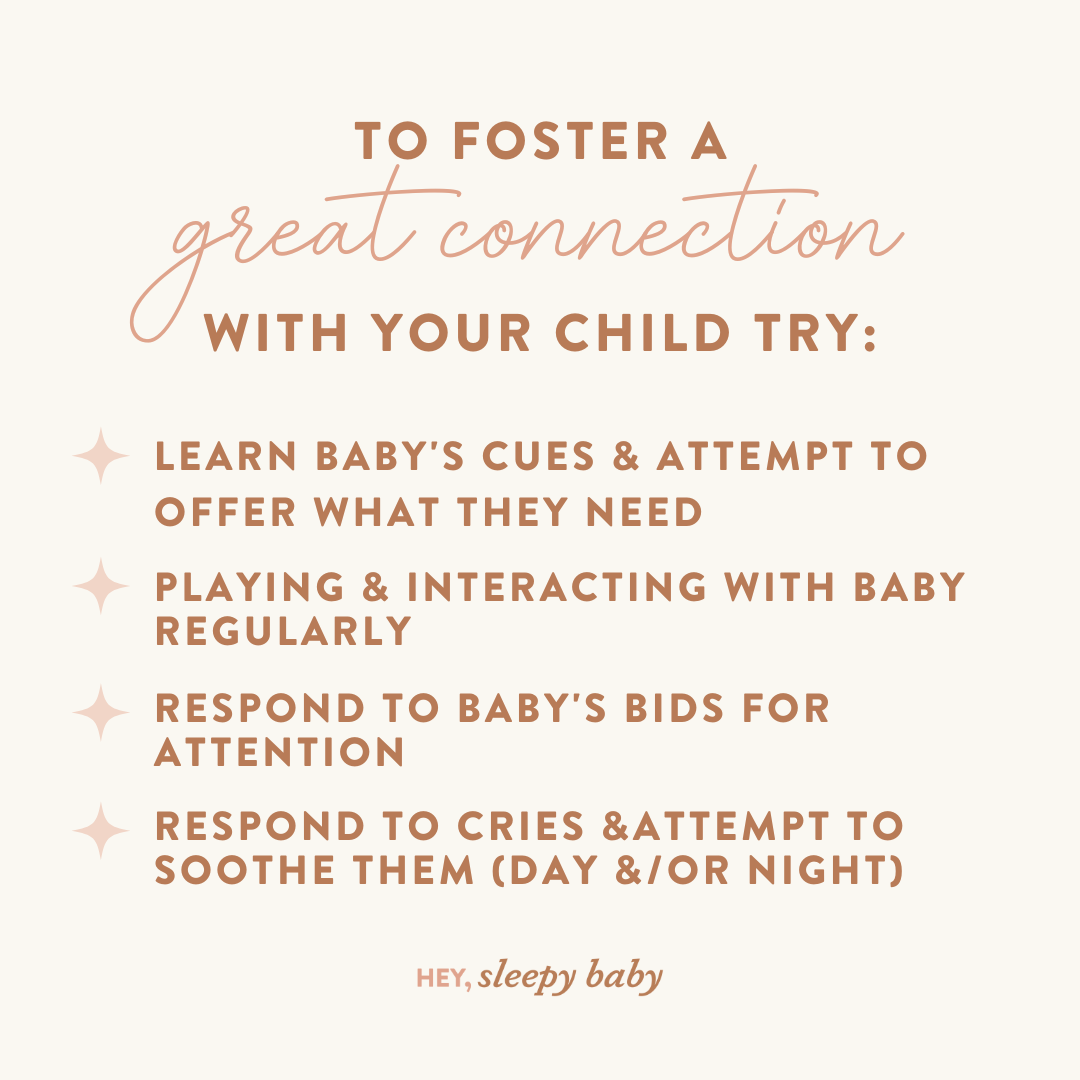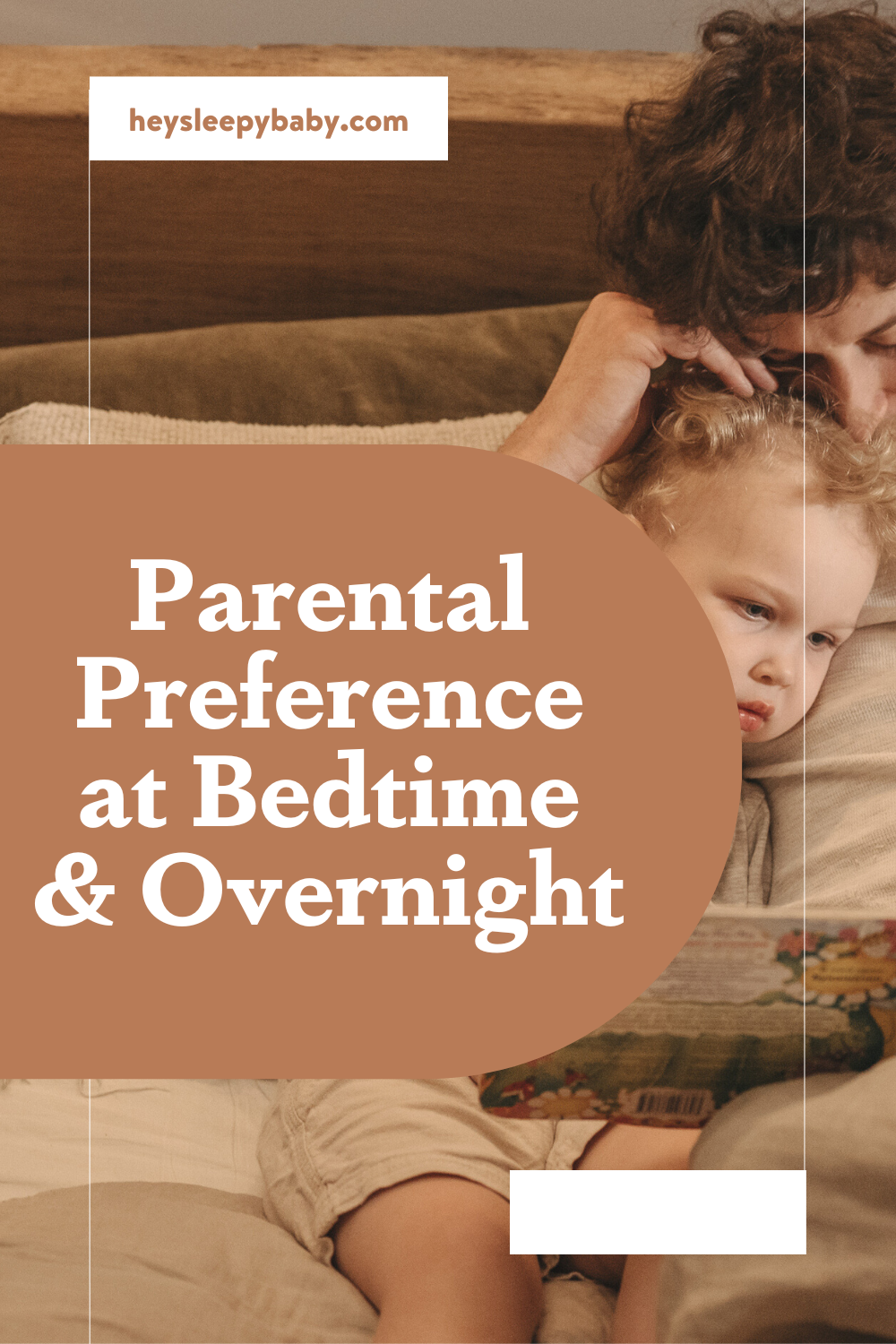I'm Rachael
Mom of 3 & Baby Sleep Expert with Big Sis Energy
& I’VE DONE ALL THE RESEARCH FOR YOU ALREADY.
Better sleep for the entire family
BROWSE COURSES
hey!
parental preference at bedtime and overnight
Does your little one scream when your partner tries to intervene during the night? Or maybe they have a meltdown if anybody except Mama hands them their cup? Babies and toddlers can be funny like this- they often have a very strong preference for one parent or caregiver and can become very upset or even dysregulated if that person is unavailable to them or if another caregiver tries to offer comfort. Parent preference is a very natural thing in infancy that may come and go for the first few years of your child’s life. It’s normal, though it does sometimes sting for the non-preferred parent. Parental preference simply means that your child strongly prefers one parent or caregiver over the other. They may cry or protest when they are with the non-preferred parent or when the preferred parent is not available to do certain things, like serve meals or do bedtime. You may notice that this occurs all the time or just during certain activities or tasks (like bedtime).

Remember:
It’s OK for our child to prefer one parent for bedtime and at night. It’s ALSO ok for you to still hold the boundary.
Parental Preference at bedtime
Typically the primary caregiver (usually mom) is preferred at bedtime (and all the time!). This is ok! It’s normal for our children to have one parent they prefer for certain things, and this sometimes changes back and forth. It’s OK for our child to prefer one parent for bedtime and at night. It’s ALSO ok for you to still hold the boundary that the other parent will be doing bedtime. You deserve a break, or maybe doing bedtime just isn’t feasible anymore for whatever reason, and you don’t need to feel guilty about this. If your partner (or whoever will be doing bedtime) is another strong attachment figure who is loving and attentive, there is absolutely no reason they can’t do bedtime or respond to your child overnight.
It’s also normal (and expected!) for some children to have a very hard time with this. We want to allow those feelings of sadness or disappointment while also remaining calm and kind, holding firm in the plan- always being your child’s anchor rather than joining them in their distress or upping the anty of big emotions. The key to supporting your young child through this is to empathize with their feeling, allow the release of that feeling (this might be tears or full blown tantrums, yelling, etc), and attempt to redirect them in a calm, firm but kind tone.
What do you do when your child prefers one parent at bedtime?
If possible, and you know that the non-preferred parent will be taking on more of the nighttime responsibilities, it’s a great idea to prep your child. This works best for toddlers and little kids, ages 18+ months or so. You can talk about what’s going to happen, use visuals or social stories, or role play during the day. There are lots of strategies for using prep and connection in the Better Bedtimes Guide.
You also want to be sure you’re connecting with your child during the day and taking on some of the caretaking tasks plus getting some connection time together. It’s also a good idea to practice being the one your child can go to for comfort when they fall down or get upset about a broken banana. If you can be there with open arms ready to soothe them when upset, they’ll come to rely on you to coregulate with them.
Let’s think about how to navigate a bedtime scenario with the non-preferred parent. Say mom usually does bedtime but she’s going out for the night with her friends, so dad will be doing the routine. Your two-year-old is very upset by this and crying for Mommy. What do you do?
First, Mom should say goodbye rather than sneaking away. This might be hard but we don’t want to trick our children or make them not trust us by leaving without them knowing. As for dad in this situation, you want to remain calm, allow the feelings of upset, and then try to move through those feelings and connect with your child with fun and togetherness.
Depending on your child’s personality you may just sit and hold space with them while they’re upset. You may offer touch like a back rub or a hug. You may use words to talk them through their feelings. Or you may lean into humor to get them on board. Some examples of what the parent doing bedtime can say:
-
“I hear you really want mommy. It’s disappointing when she can’t do bedtime with you. I am here for these big feelings you’re having. I’m right here.”
-
“I love you so much. I’m really excited to do bedtime tonight. I wonder which books you’ll choose? I bet I can guess!
-
“Mom will give you a kiss and then I’ll tuck you in and sing your songs. Should we hop to bed like frogs or wiggle like worms?”

If the preferred parent (we’ll stick with mom) is going to be home but is unavailable for bedtime, you can do something similar. You can offer a goodnight kiss from mom, or let your child know she’ll come say goodnight when the routine is all done. If mom is not available at all, you’ll continue to support and move through the bedtime routine as closely to normal as you can. Offer lots of silliness, connection, words of affirmation, and physical touch. Keeping calm is the most important thing! Don’t focus so much on scripts of what you “should” say but rather take your child’s lead and learn what works best for them in the moment.
For the non-preferred parent, know that these reactions are not personal and it will likely pass. If your child prefers your partner it doesn’t mean they don’t love you. Sometimes little ones go back and forth in their preferences. I know lots of “partner tips” stress that getting involved means doing equal shares of diaper changes, bath time, and feeding. And these things are great- but they alone will not help you partner form a strong bond with your baby.
come up with your own way
You and your partner can have totally different ways of approaching bedtime, it’s really OK! Children do typically love structure and do well with routines. You may want to keep the bedtime routine fairly predictable and similar no matter who’s in charge. However, you as the non-preferred parent may want to start your own little ritual with your child that’s special to just you and them. Something like a secret handshake, special song or book, funny way you tuck them in, telling a silly story, etc. can be something that’s unique to the way YOU do bedtime and might make your child start to look forward to your nights of putting them down! You also might try something like rough & tumble play in the evening, or something else that will help get your child’s extra energy out. There are lots of ideas for connecting activities you can incorporate in the Bedtimes Guide.

tips for babies
For young babies, it’s a little bit different when there’s a preferred and a nonpreferred parent. It’s a little harder to talk them through this separation anxiety and the attachment they have to their preferred parent (especially if a breastfeeding mother) is strong on a biological level. They also may not have object permanence yet. Sometimes with this situation it’s actually best if the preferred parent is out of sight and proximity. Babies tend to have a “sixth sense” for their preferred caregiver and sensing that they are around but not available to them can be distressing. It’s also important for the non preferred parent to feel confident and calm when interacting with the baby. Babies can pick up on stress and they’ll have a tough time calming down if someone is very tense and anxious. If you ARE tense and anxious- fake it till you make it! Do some deep breathing, put in noise cancelling headphones or listen to your favorite music while you hold or rock your baby- anything you can do to make yourself feel like you’ve GOT this and you’re as calm as a cucumber will calm your baby down much faster. Remember that a baby crying is not necessarily an emergency- we just don’t want them crying it out alone. If you can calmly hold them and support them through their tears they are getting the benefit of your coregulation.
Building a strong attachment

The most important factor in forming secure attachments is not who feeds and changes the child but who plays and communicates with him or her and responds to their cues, attempting to soothe and offer what they need. Attachments are most likely to form with those who responded accurately to the baby’s signals, not the person they spent more time with or who feeds them. So to be able to form a bond strong enough with your baby to be able to get them to sleep with calm and confidence, the attachment relationship is key. To be sure you are fostering a great connection with your child, think about trying the following:
-
Learning baby’s cues and attempting to offer what they need
-
PLAYING and interacting with baby regularly
-
Responding to baby’s bids for attention- cooing back at them, picking them up when they reach for you, talking with them, smiling at them, singing to them, etc.
-
Responding to cries and attempting to soothe them (day and/or night)
When parents or caregivers respond to baby quickly and consistently, babies and young children learn that they can depend on the people who are responsible for their care and trust them, which is the foundation for secure attachment. This is crucial for the non-preferred parent to understand. Even though it may be hard at first, your child needs consistent experiences with being soothed and cared for by this parent in order to feel safe with them and to allow them into the bedtime routine or nighttime wakings.
Is your family struggling with parental preference, supporting tears, or other issues with your toddler or little kid at bedtime or overnight? Check out the Better Bedtimes Guide to see all the ways it can help you get on the right track and make the evening a time you cherish rather than dread!
Was this helpful? Save it for later!

binge reads
We think you'll love these
You deserve to the
baby stage, not just "survive it."
And you DON'T have to sacrifice your values, ignore your instincts, or force yourself to follow a method you don't align with just to get your baby back to sleep.
I’m here to help you create a restful, sustainable sleep environment that honors both your baby’s needs AND your own (without the stress OR the guilt!) because, no, you don’t have to choose between the two.
enjoy!
BABY SLEEP COURSES →
BABY SLEEP CONSULTS →
Wish you could help your baby sleep better without resorting to sleep training? Download my FREE guide to a good night’s sleep and learn 8 simple, science-backed tips for supporting your child’s needs.
Traditional sleep training methods don’t have to be your solution to better sleep.
SLEEP TRAINING ISN’T THE ONLY WAY TO GET GOOD SLEEP
Hey, I'm Rachael and Hey, Sleepy Baby is for parents who want to get their nights back, without sleep training their babies.
NO ONE TOLD US POD
explorING the untold truths of parenting


